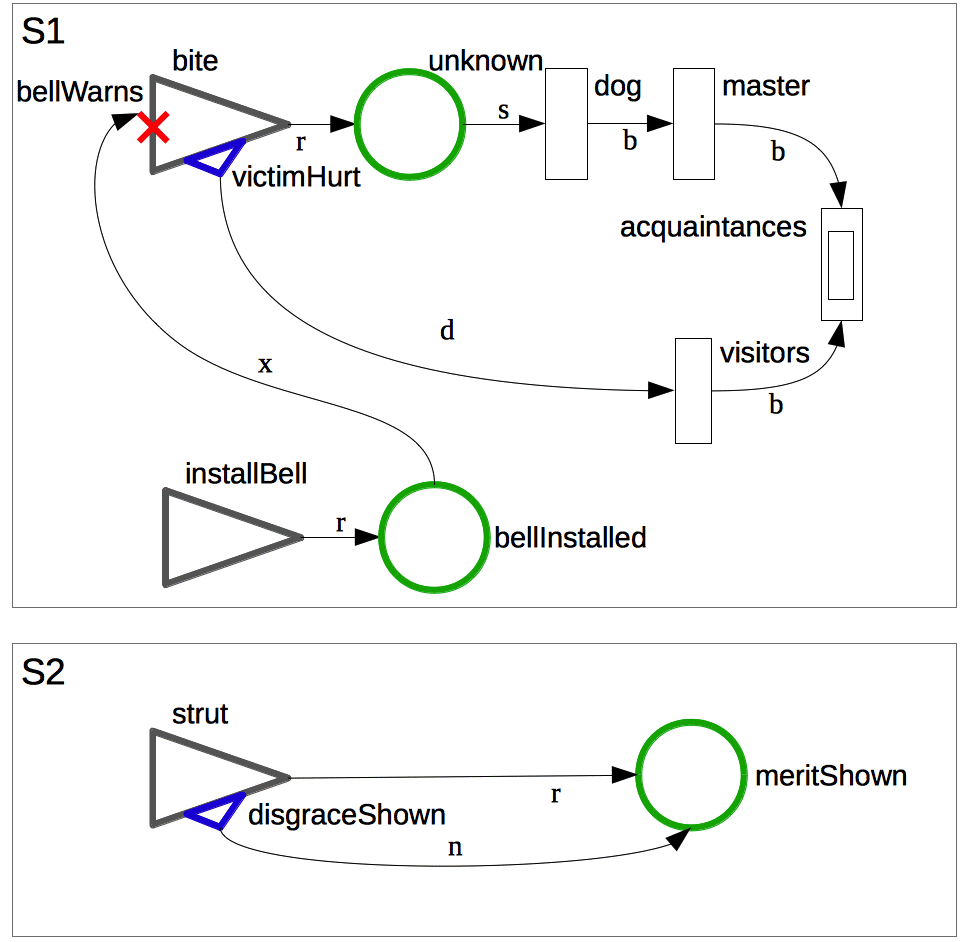The Mischievous Dog: Difference between revisions
From IDSwiki
Jump to navigationJump to search
| Line 8: | Line 8: | ||
|<div style="text-align: center;">'''{{PAGENAME}}'''</div>]] | |<div style="text-align: center;">'''{{PAGENAME}}'''</div>]] | ||
===Dramatic Cycles=== | ===Dramatic Cycles=== | ||
* ((bite,unknown,dog,master,acquaintances),(bite, | * ((bite,unknown,dog,master,acquaintances),(bite,victimHurt,visitors,acquaintances)) | ||
Biting visitors seems to be satisfying for the dog, which belong to the master. At the same time, it degrades visitors, which are friends with the master. | Biting visitors seems to be satisfying for the dog, which belong to the master. At the same time, it degrades visitors, which are friends with the master. | ||
* ((strut,meritShown),(strut,disgraceShown,meritShown)) | * ((strut,meritShown),(strut,disgraceShown,meritShown)) | ||
Latest revision as of 15:10, 3 May 2016
Aesop's Fables - 4. The Mischievous Dog
- The Aesop's fables dramatic structures -
This page is part of a computational narratology project
Text
Structure
Dramatic Cycles
- ((bite,unknown,dog,master,acquaintances),(bite,victimHurt,visitors,acquaintances))
Biting visitors seems to be satisfying for the dog, which belong to the master. At the same time, it degrades visitors, which are friends with the master.
- ((strut,meritShown),(strut,disgraceShown,meritShown))
When the dog struts, he believes he shows merit, but in fact, he does not.
Comments
The second dramatic cycle invoves two different view points of the same action.
